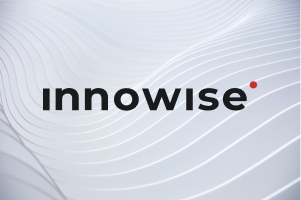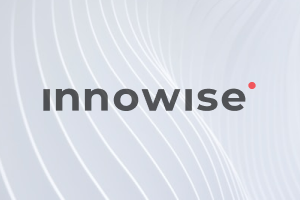Your message has been sent.
We’ll process your request and contact you back as soon as possible.
The form has been successfully submitted.
Please find further information in your mailbox.


Innowise delivered a full-scope Odoo ERP solution for a mid-sized manufacturer of specialized industrial and consumer packaging.*
faster order-to-delivery time
reduction in operating costs

The client is a mid-sized U.S.-based manufacturer specializing in custom industrial and consumer packaging. For more than 20 years, the company has been supplying durable, sustainable products for the food and beverage, electronics, and medical sectors.
Detailed information about the client cannot be disclosed under the provisions of the NDA.
As the company scaled, juggling orders, inventory, schedules, and reporting became more complex. Manual processes ate up time, profit margins thinned, and teams were pulled away from high-value work. With sales, production, and finance each working in separate systems, leadership lacked the real-time visibility they needed to make fast, informed decisions. Bottlenecks slowed down everything from order processing to shipping, putting pressure on delivery timelines and capping growth.
The client’s digital infrastructure was scattered. Sales ran on a standalone CRM, finance on a separate accounting platform, and production relied on hand-updated spreadsheets. None of it was connected, so data was duplicated, reports conflicted, and errors like mismatched inventory counts, incorrect invoicing, and outdated sales data crept in. Reporting meant manually pulling numbers from multiple sources, and the lack of automation resulted in inconsistent revenue figures across systems.
To scale without losing control, the company needed a unified system to connect sales, finance, and production. After weighing their options, they partnered with Innowise to implement Odoo as their central ERP.
Before any code was written, our team ran a structured discovery and planning sprint with stakeholders from finance, production, quality, and sales. Together, we mapped the company’s core workflows, from order intake to shipment and from procurement to payment, identifying friction points, redundant steps, and opportunities for automation.
This analysis helped us prioritize Phase 1 delivery around Odoo’s core modules: sales, MRP, stock, purchase, and accounting. Innowise outlined clear success criteria for each flow, including real-time inventory updates, automatic invoicing, and seamless bank reconciliation.
We also built out a data migration plan. Specialists reviewed legacy spreadsheets and siloed systems, defined transformation rules aligned with Odoo’s data model, and set up validation steps to provide integrity. The delivery plan followed a two-week sprint cadence with demos on a staging environment, iterative backlog grooming, and a cutover strategy that included hypercare support after launch.
Our team built the ERP solution around Odoo 18 Enterprise, with a focus on unifying previously siloed processes into a single reliable system. We kept the architecture modular and future-ready, so the client could expand functionality without heavy rework.
Our design approach followed three principles:
To keep the system easy to maintain, our experts used Odoo’s ORM for custom logic, OWL for interactive dashboards, and REST APIs for integrations with third-party systems. All modules were deployed within the client’s private cloud environment.
After completing business process mapping, our team executed a structured data migration plan. Innowise’s experts extracted, cleaned, and transformed decades of historical records from spreadsheets and siloed systems into the new, structured Odoo database. Transformation rules resolved duplicate IDs, aligned inconsistent fields, and enforced referential integrity across modules.
We connected Odoo’s MRP, Stock, Purchase, Sale Management, and Account modules to build a smooth flow of information across departments. Using Odoo’s ORM, our experts ensured that updates in one area, like a confirmed sale, instantly triggered the right actions elsewhere, such as inventory allocation or invoice generation. This real-time data sync eliminated manual handoffs and kept all departments aligned.
Using the OWL framework and XML views, our developers built custom dashboards to deliver real-time KPIs and operational insights across teams. For advanced reporting, we wrote optimized SQL queries to pull data directly from PostgreSQL, so managers can instantly generate detailed financial forecasts, scrap-rate analysis, and more. To maintain speed under heavy loads, we pre-indexed key tables and implemented materialized views for high-volume queries.
We embedded quality checks into every step of production, from the moment raw materials arrive to the minute finished pallets leave the floor. Every batch now carries a digital audit trail that records who handled it and when. If something is off, the batch is automatically put on hold and QA gets an instant alert. Otherwise, it moves straight into inventory. This system gives the client complete traceability for ISO 9001 and FDA compliance without extra paperwork.
A crucial part of the project was making sure every employee felt confident with the new system from the very beginning. Innowise ran hands-on, role-based training sessions for everyone, from the factory floor to finance, so each team member could hit the ground running with Odoo. This approach guaranteed a smooth transition and immediate system adoption across the company.
Our team started with a focused discovery and analysis sprint to pinpoint pain points, prioritize workflows, and set clear implementation goals. From there, we ran two-week Scrum sprints, giving the client full visibility into progress and deliverables at every step.
Because the requirements were evolving, our experts used a Time & Materials model instead of a Fixed Price. This model gave us the flexibility to refine the scope after each sprint demo, tackle technical spikes early, and adjust priorities as new insights surfaced without slowing delivery.
At the end of every sprint, stakeholders joined a staging environment demo to review progress and suggest refinements. For the final rollout, we added a hypercare phase to address post-launch tweaks and guarantee a smooth system adoption.
We set out to give every department a single, reliable source of truth without piling on complexity. The system now automates critical workflows, keeps data clean, and surfaces real-time insights. Now the client can focus on growth instead of wrestling with disconnected systems.


Your message has been sent.
We’ll process your request and contact you back as soon as possible.

By signing up you agree to our Privacy Policy, including the use of cookies and transfer of your personal information.